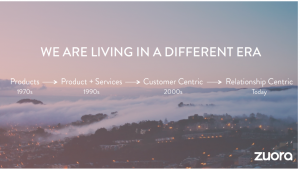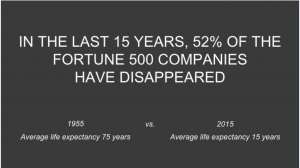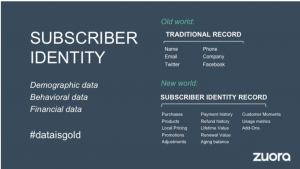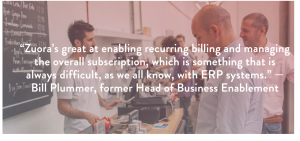Pitch to win: “The greatest sale deck ever”
I did another inspiring mentoring session for the brilliant Expert Impact this week, coaching three social entrepreneurs on brand-led growth. One of the key questions that came up was crafting a brand story to use when pitching to investors. This prompted me to look up a great Linked In post by Andy Raskin (1) on “The greatest sales deck ever”. The sales deck in question was for Zora, a Silicon Valley based company that sells a subscription billing software platform.
Even if you’re not seeking to raise money from investors, I suggest pitching to win is super important. We are ALL selling ALL the time, whether you are an agency pitching for new business, or a marketing director pitching for funding for a new project, or an interviewee trying to get a new job.
So, here are the 5 key steps to help you create a killer pitch …
#1. Name a Big, Relevant Change in the World
The first step is about being customer issue focused. “Don’t kick off a sales presentation by talking about your product, your locations, your clients, or anything about yourself,” Andy says. “Instead, name the undeniable shift in the world that creates both (a) big stakes and (b) huge urgency for your prospect.” This sound obvious, but most sales pitches do start with “Our company is….”
Here is how Zora do this… the phrase “subscription economy” sums up in a distinctive and memorable way the trend to people making recurring payments rather than one-off purchases.

A follow-up slide shows the history of the change that has happened:

Andy highlights a difference from most pitch advice, which is to start with a consumer problem. Doing this can put the person you are presenting to on the defensive, as they may be unaware of the problem, or not want to own up to suffering from it.
Andy suggests that highlighting a shift in the world is a better approach: “You get prospects to open up about how that shift affects them, how it scares them, and where they see opportunities. Most importantly, you grab their attention.”
#2. Show There’ll Be Winners and Losers
The second step addresses a phenomenon I’ve posted on before called “loss aversion.” People tend to stick with what they know and don’t like change. To get over this barrier, you have to “demonstrate how the change will create big winners and big losers.”

Zora do show how winning companies have shifted from selling products to subscription services, including new start-ups like Dollar Shave Club, that I posted on here.
#3. Tease the Promised Land
The next step is to present a taster of what Andy calls “the happily-ever-after that your product/service will help the prospect achieve—the Promised Land.” This Promised Land should be desirable but hard to achieve without outside help.
Zora’s Promised Land slide shows the customer benefits of the subscription experience:

#4. Introduce Features as “Magic Gifts”
Only now do you start to talk about you company and what you have to offer. Here, Andy draws on a Hollywood movie analogy, suggesting you “Position capabilities like ‘magic gifts’ for helping your prospect reach that much-desired Promised Land.”
Zora do this by talking about how its customer record is the key to a richer subscriber experience.

#5. Present Evidence You Can Make the Story Come True
The road to the Promised Land is of course not an easy one, with many obstacles to overcome. And prospects are likely to be skeptical of your ability to deliver. Now its time to show some evidence that you can “make the story you’re telling come true.” This is where “social proof” comes in: success stories about how you’ve helped someone similar to your prospect each the Promised Land.
Zora has a set of customer success stories, such as this one from NCR.

So there you have it. 5 steps to a killer sales pitch which build on the principles of storytelling. Why not try them out on your next presentation and let me know how you get on?!
Sources:


